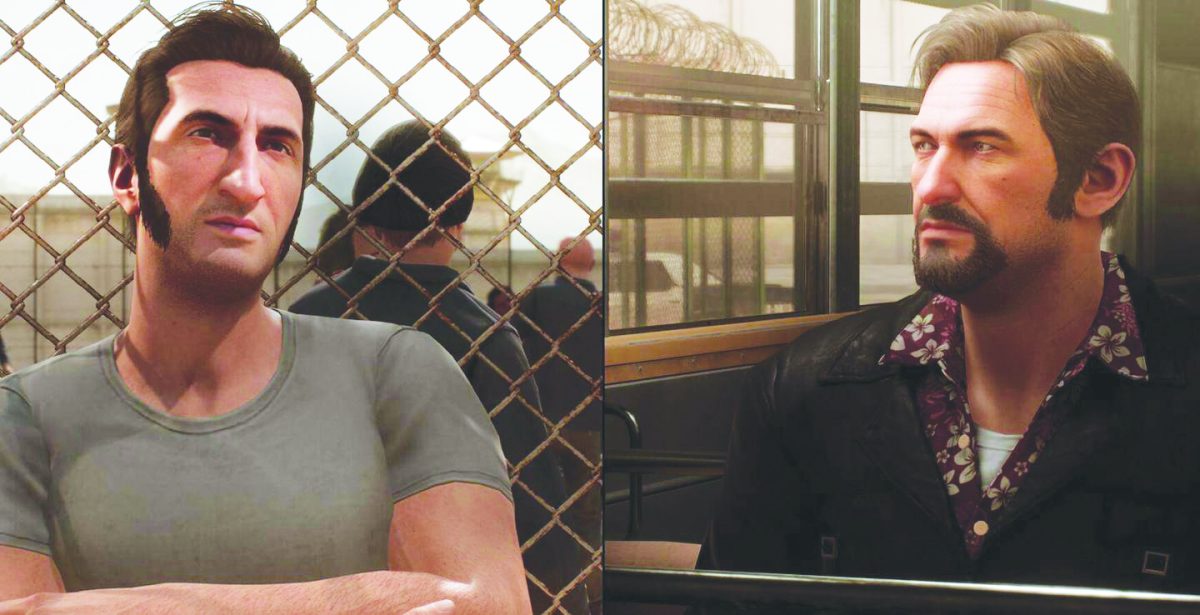Most people see multiplayer gaming nowadays as an online affair, considering the rise of internet-based gaming essentially killed the idea of “couch-co-op” games. “A Way Out” is a direct challenge to this notion; an action-oriented adventure, only playable in two-player co-op, that for the most part excels in creating a best-buddy dynamic throughout the experience, encouraging you to get an extra controller and a friend.
Players are put in the shoes of the two protagonists, Vincent Moretti and Leo Caruso, who are in prison preparing to serve long-term sentences. After a chance encounter during a fight sequence, Vincent and Leo team up to try and break out of prison and exact their revenge. Coincidentally, Vincent and Leo were both sent to prison by the same criminal who betrayed them.
Narratively, “A Way Out” thrives off of taking inspiration from the greatest action movies from the ‘70s and ‘80s. Two not-so-heroic dudes need to go take out this big, bad villain who double-crossed them. The game presents itself as a serious revenge story, but doesn’t hesitate to embrace and relish its absurdity. Even the main villain is seen sporting the age-old stereotype of gold guns.
Between Leo (Fares Fares) and Vincent (Eri Krogh), their performances aren’t inspiring and at times a bit awkward, but in that same vein they exemplify everything great about cheesy anti-hero movie tropes. All of the trappings of a classic action movie are here, all the way from the characters to the gameplay.
Playing through the game is a heavily cinematic experience. Cut-scenes and gameplay operate seamlessly among one another, weaving in and out of interactive moments gracefully. Since the game is exclusively played in a two-player mode, the screen is constantly split in two frames, showing both Vincent’s and Leo’s perspective.
These “24”-esque screen divides rarely distract without purpose, and when it does, it serves to exemplify a pivotal point in the story or highlight a certain joke in conversation. The unfortunate thing is that during some player interactions audio gets trumped by the other player’s actions, delegitimizing one player’s moment for another’s. The audio fades feel cheap, like they could have implemented a different system so that players don’t overshadow one another while they’re playing.
Individuality in “A Way Out,” despite being a necessary distraction from constantly working together, often creates great lulls in gameplay. There are a few key scenes during the game, such as the hospital scene, that portray exciting moments where individual players’ actions are spliced between one another. Players are encouraged to root for each other during these moments because they’re both moving towards the same goal against unique obstacles.
Individual moments outside of action sequences often serve to unbalance the experience of “A Way Out.” Some moments feel peaceful and offer a nice break between moments of suspense. Other times it introduces these extreme tonal shifts that feel inappropriate and break the suspension of disbelief. The game features exterior mini-games with basketball, baseball, darts and even Connect Four, but these are just gimmicky gameplay distractions that only derail the experience from its roots in suspenseful action.
Despite awkward displacing and pacing issues during the individual moments, it’s when the players have to work together that “A Way Out” truly shines. Many of the action set-pieces throughout the game are tense moments where cooperation feels not only justified but necessary. Many of the scenes during the prison break feature tense moments of cooperation that capture both players’ attention in a meaningfully enjoyable way.
While the final act does struggle with some awkward gunplay, there is a surprising twist in the co-op formula that happens at the finale. It surprises the player in a thrilling way that encourages a competitive spirit out of nowhere, and the players end up working against each other to complete a final goal.
“A Way Out” is fantastic because of its co-op first mantra, and never strays too far from that purpose. While it does struggle with the moments in between, it’s when the players have to work together where the game truly shines.







